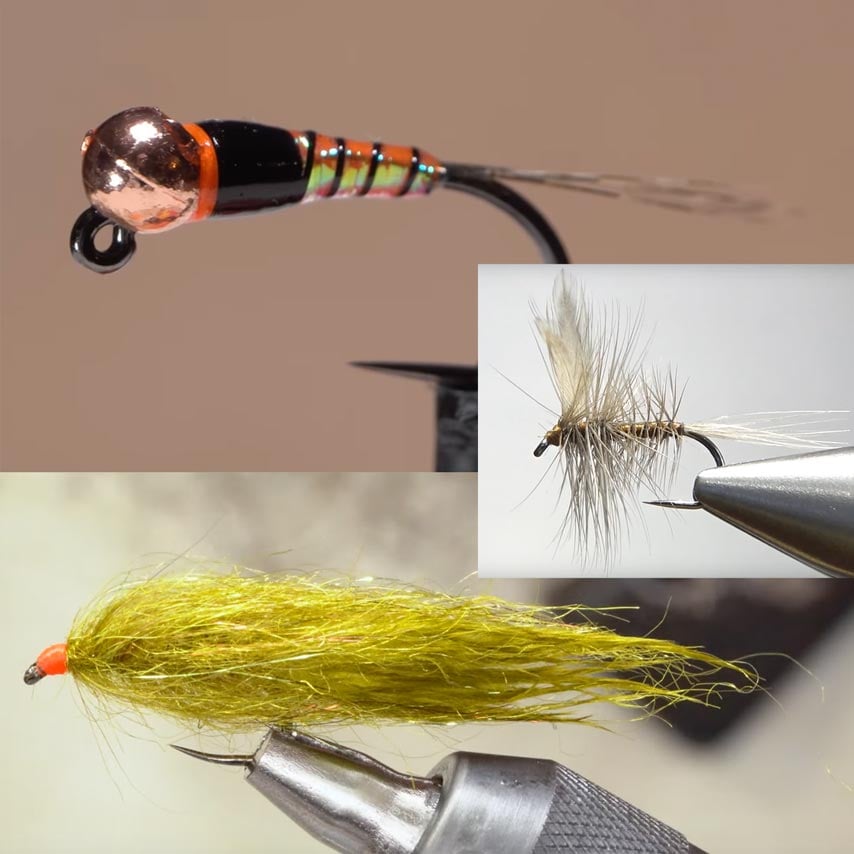

In this week’s Tying Tuesday, we’ve got three cool patterns for trout. We kick things off with a simple, high-floating dry fly that should be effective for the next few months across the country. Matt O’Neal of Savage Flies demonstrates how to create a heavily hackled Isonychia imitation. Next is a Perdigon-style nymph from Tim Flagler of Tightline Productions. As usual, Tim offers several great tips for material handling and getting everything on the hook in the right place. Finally, Kyle from AvidMax whips up a ridiculously simple leech pattern designed for still water, but I’m sure it works anywhere you find leeches. River anglers may want to add a fluorescent cone to get it down in the water column.
Slate Drake
Hook: Standard barbless dry-fly hook, sizes 12-14.
Thread: Brown, 8/0 or 70-denier.
Wing: Dun hen-feather tips.
Tails: Dun hackle fibers.
Body: Tying thread.
Body hackle: Dun dry-fly hackle, 2 sizes small.
Hackle: Dun dry-fly hackle.
Head: Tying thread.
Jig Napoleon
Hook: Standard jig hook (here a Lightning Strike JF2), sizes 12-18.
Bead: Copper slotted tungsten bead, 7/64-inch or to match hook size.
Thread #1: Fluorescent orange, 8/0 or 70-denier.
Weight: Lead-free round wire, 0.15.
Tail: Medium pardo Coq de Leon fibers.
Rib: Black Ultra Wire, small.
Body: Pearl Flashabou.
Underbody and collar: Fluorescent orange tying thread.
Thread #2/thorax: Black, 8/0 or 70-denier.
Coating: UV cure resin.
Tools: Plunger-style hackle pliers, fine-tipped bodkin, makeup applicators.
Seal Leech
Hook: Barbless black wet-fly hook (here an Hanak 230BL), size 8.
Thread: Olive Nano Silk, 6/0 or 100-denier.
Tail: Olive Woolly Bugger Marabou.
Underbody: Tying thread.
Body: Dark olive Arizona Simi Seal (in a dubbing loop).
Head: Fluorescent fire orange thread, 8/0 or 70-denier.
Tools: Dubbing brush.
Trending Products











